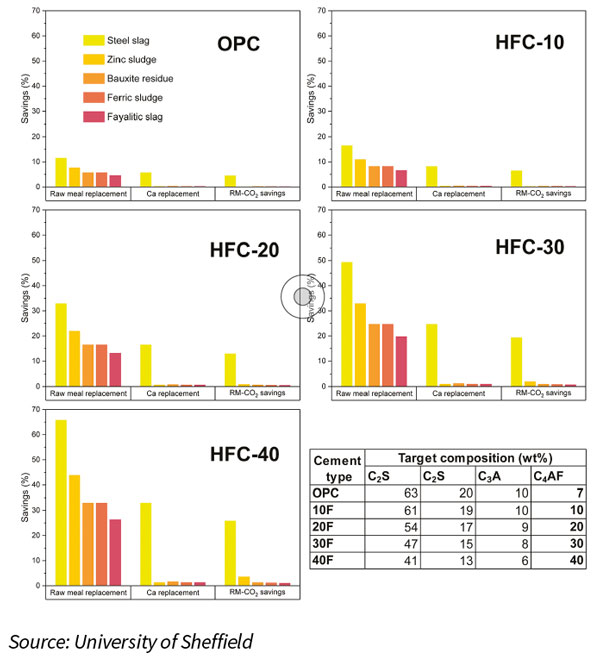Ironing out the carbon emissions of clinker production
The use of iron-rich industrial wastes can provide one of the pathways to decarbonising the global cement industry with high-ferrite cement types embodying less CO2 than their ordinary counterparts. By Cecilia Pesce, Aniruddha Baral, Anna Simmons and Theodore Hanein, The University of Sheffield, UK.

Figure 1: estimates of potential raw meal replacement, calcium replacement,
and raw materials-related CO2 savings by using different types of
iron-rich waste products in different target clinker compositions,
shown in the bottom right table (Source: University of Sheffield)
Reducing the amount of CO2 released during cement production is one of the main challenges for reaching net zero by 2050. With most cement-related emissions originating from the clinker production process, changing the conventional manufacturing process and raw materials used will be crucial. For many years, several strategies have been developed to tackle this challenge, including using industry by-product wastes to replace virgin kiln raw materials as a cheap, resource-efficient solution that reduces emissions. In terms of developing alternative cement clinkers, high-ferrite Portland cement (HFC) embodies less CO2 than ordinary Portland cement (OPC) because of the lower clinkering temperature required and the lower amount of calcium that needs to be calcined due to the stoichiometry of ferrite compared to the other clinker phases. Ferrite also has a relatively low manufacturing enthalpy (as calculated in Gartner et al, 2018,1 from the standard enthalpies of formation from the elements of the raw materials and clinker phases), close to belite, when compared to the other clinker phases (see Table 1).

